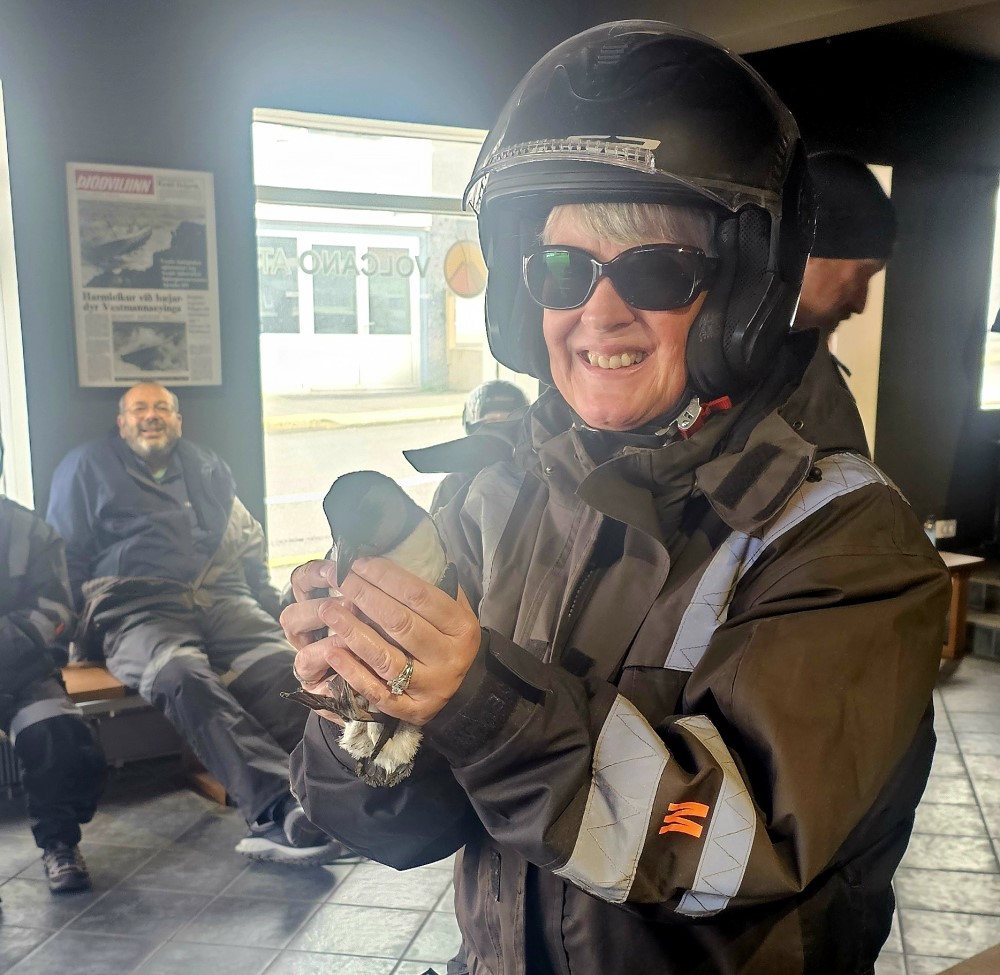Puffling Season in Vestmannaeyjar: How to Spot and Rescue Baby Puffins
Juvenile puffins, known as pufflings, have it easy when they first arrive on the scene. Their parents have created a cosy burrow and this nest is a safe haven for their offspring while they come and go to keep them supplied with food. But all good things come to an end, and just like human children, at some point their parents remind them it’s time to fend for themselves.
However, these birds are clearly fans of tough love, and to ensure the youngsters stand on their own two feet, they stop feeding them. This forces the chicks from the nests and in theory, off to sea to begin life like an adult. For most, this process goes smoothly, but for a few, disoriented by the lights of Heimaey’s built up areas or blown off course by an unexpected gust of wind, they make a spectacular error and fly the wrong way.
The puffling parade
Finding themselves in town rather than out over open water presents a set of challenges for these hapless pufflings. Puffins aren’t land based throughout the winter and need to be out on the ocean to thrive. Finding themselves on land instead is not the best start in life. Luckily, that’s where Heimaey’s residents step in.
In August and sometimes September, everyone, including children, helps out with what’s known as the puffling parade. Carrying cardboard boxes, local people (and visitors keen to help out) wander the streets at night in search of stray puffins, coming to the aid of those that are lost or confused.
The pufflings are mostly taken care of by those who find them. They’re looked after in people’s homes for the night and the following morning are taken to the cliff top and released back into the wild. It’s a tradition that goes back a long way and the practice has become part of the culture of the Westman Islands.

Puffling rescue
A handful of pufflings are injured as they come into land on hard surfaces such as tarmac, while the islanders’ pet cats can also be considered a potential foe. If any birds show signs of injury, it isn’t possible to release them straightaway as they wouldn’t be able to survive. Instead, since 2019, they have been taken to the SeaLife Trust building down by the harbour – where the rescued belugas are.
There, they can be treated and rehabilitated. Working with volunteers and representatives of Naturastofa Sudurlands and Þekkingarsetur Vestmannaeyjar, staff working for the SeaLife Trust assess the pufflings. Some just need to be fed for a short time to ensure they are plump enough to be fit to fly. Others may need to be treated for injuries or have oil and dirt cleaned off their feathers. The majority are able to released, with an average stay at the sanctuary of about a week.
A very small number become permanent residents, either because of vision impairment or leg and wing injuries that cause long-term disability. Their care is funded through donations, which pays for vet costs and about 3 kg of capelin fish and krill which they consume each month. You can adopt one of these puffins if you wish and help ensure that centre staff can continue to support them.

A team effort and a major success story
An estimated 700,000 pairs of puffins return to Heimaey each year to nest and raise their chicks. In a typical year, about 3000 pufflings are rounded up by the residents of Heimaey who help them on their way. About 60 or so need additional care and attention, and almost all of those make it to the ocean eventually. If you’re planning a visit to the Westman Islands in August, perhaps you’ll be part of this incredible effort as well.